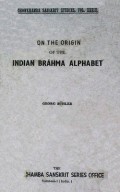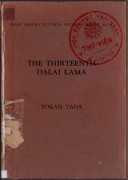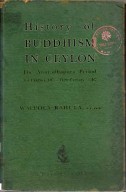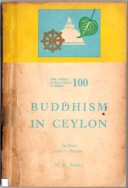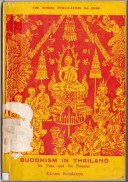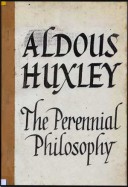Tìm Sách
Sách tiếng Anh-English >> On The Orgin of the Indian Brahma Alphabet
Thông tin tra cứu
- Tên sách : On The Orgin of the Indian Brahma Alphabet
- Tác giả : George Buhler
- Dịch giả :
- Ngôn ngữ : Anh
- Số trang : 124
- Nhà xuất bản : The Chowkhamba Sanskrit Series Office
- Năm xuất bản : 1963
- Phân loại : Sách tiếng Anh-English
- MCB : 1210000006162
- OPAC :
- Tóm tắt :
PUBLISHER’S NOTE
Being an eminent Indologist, Buhler is most famous for his contributions to the Indian Paleography. His present work is an authoritative, and perhaps, the only contribution on the subject of the origin of the Indian Brahma Alphabet. Immediately after the issue of the first edition of this monumental work in the Indian Series No. III, in 1895, it was sold out, and yet there remained numerous requests for additional copies. Encouraged from this edition, adding thereby many new things in the light of various new researches in the field, and two appendices on the origin of Kharosthi alaphabet and of the so-called letter-numerals of the Brahma. The result is the present edition.
However, as this also soon went out-of-print, and demand for it was always there, we decided to reprint it from its latest edition.
We hope that out endeavour would receive the usual patronization of the readers.
PREFACE TO SECOND EDITION
At the few separate copies of the Indian Studies No. struck off in 1895, were sold very soon and rather numerous requests for additional ones were addressed both to me and to the bookseller of the Imperial Academy, Messrs. Carl Gerold’s Sohn, I asked the Academy for permission to issue a second edition, which Mr. Karl J. Trubner had consented to publish. My petition was readily granted. In addition Messrs, von Holder, the publishers of the Wiener Zeitschrift fur die Kunde des Morgenlandes, kindly allowed me to reprint my article on the origin of the Kharosthi, which had appeared in vol. IX of that Journal and is now given in Appendix I. To these two sections I have added, in Appendix II, a brief review of the arguments for Dr. Burnell’s hypothesis, which derives the so-called letter-numerals or numerical symbols of the Brahma alphabet from the ancient Egyptian numeral signs, together with a third comparative table, in order to include in this volume all those joints, which require fuller discussion, and in order to make ạt a serviceable companion to the palaeography of the Grundriss. The chapters on the Brahmi and the Kharosthi have been throughout revised and the first has been changed most. A new comparative table of the Semitic and Brahma signs, the same as has been used for the Grundriss, has been given. The Additional Note at the end has been omitted, as, since the partly to transitional North-Semitic characters, may at any moment require modifications on account of new epigraphic discoveries in India or in Western Asia. And important epigraphic discoveries will, no doubt, soon be made in, India, since of late ancient sites have been identified, which were famous places of pilgrimage before the times of the Mauryas.
TABLE OF CONTENTS
Preface, pp. III—XII.
- Former derivations of the BrAhmĩ lipi, pp. 1—5.
- Literary evidence for the antiquity of writing,
from the Vãsistha Dharmasũtra, pp. 5—7,
from the Jatakas and the Vinayapitaka, pp. 7—22,
from the Lalitavigtara and the Jaina Agamas, pp. 22 — 35.
III. Palaeographic evidence for the antiquity of the Brahmi lipi,
from the Asoka Edicts, pp. 36—43,
from the legend of the Eraụ coin, running from the right to the left, pp. 44—45,
from the Bhattiprolu alphabet, pp. 45—47,
from the legends of the Taxila coins, pp. 47—50,
from the Persian Sigloi, pp. 51—53.
- The derivation of the Brahma letters from the most ancient North- Semitic signs.
General principles, pp. 53—56.
The borrowed signs, pp. 66—72.
The derivative ‘consonants and initial vowels, pp. 72—77.
The medial vowels, pp. 77—82.
The approximate date of the introduction of the Semitic letters into India, pp. 83—91.
Appendix I The Origin of the Kharosthi Alphabet, pp. 92—114.
Appendix II. The Origin of the ancient Brahma Numerals, pp. 115—119. Addenda and Corrections:
Further passages from the Jatakas, pp. 120—124.
The twelve Phala in the Bengal schools, pp. 120—124.
The Petrofski MS. from Khotan, PD. 120—124.
 Facebook
Facebook
 Google
Google
 Google+
Google+
